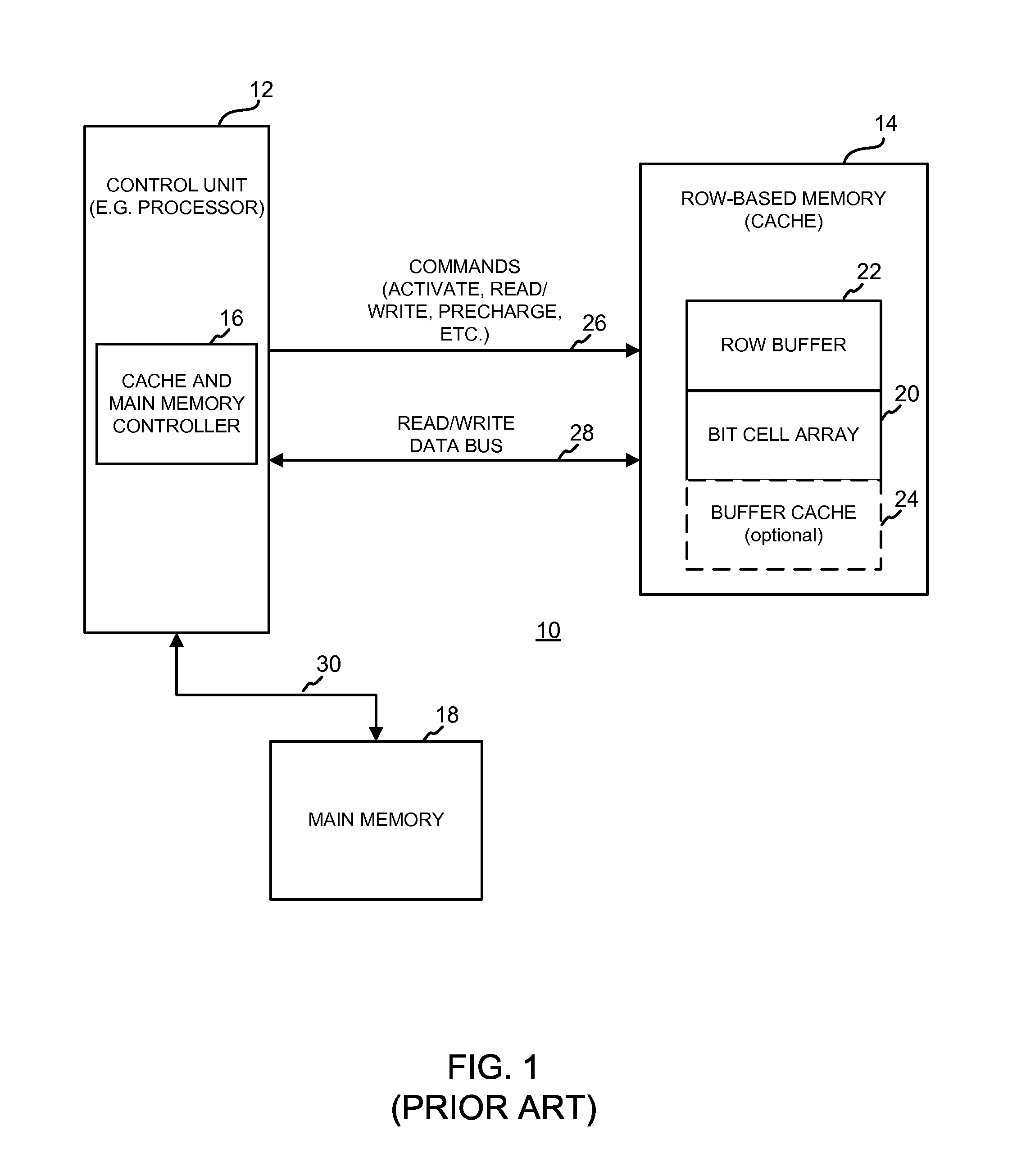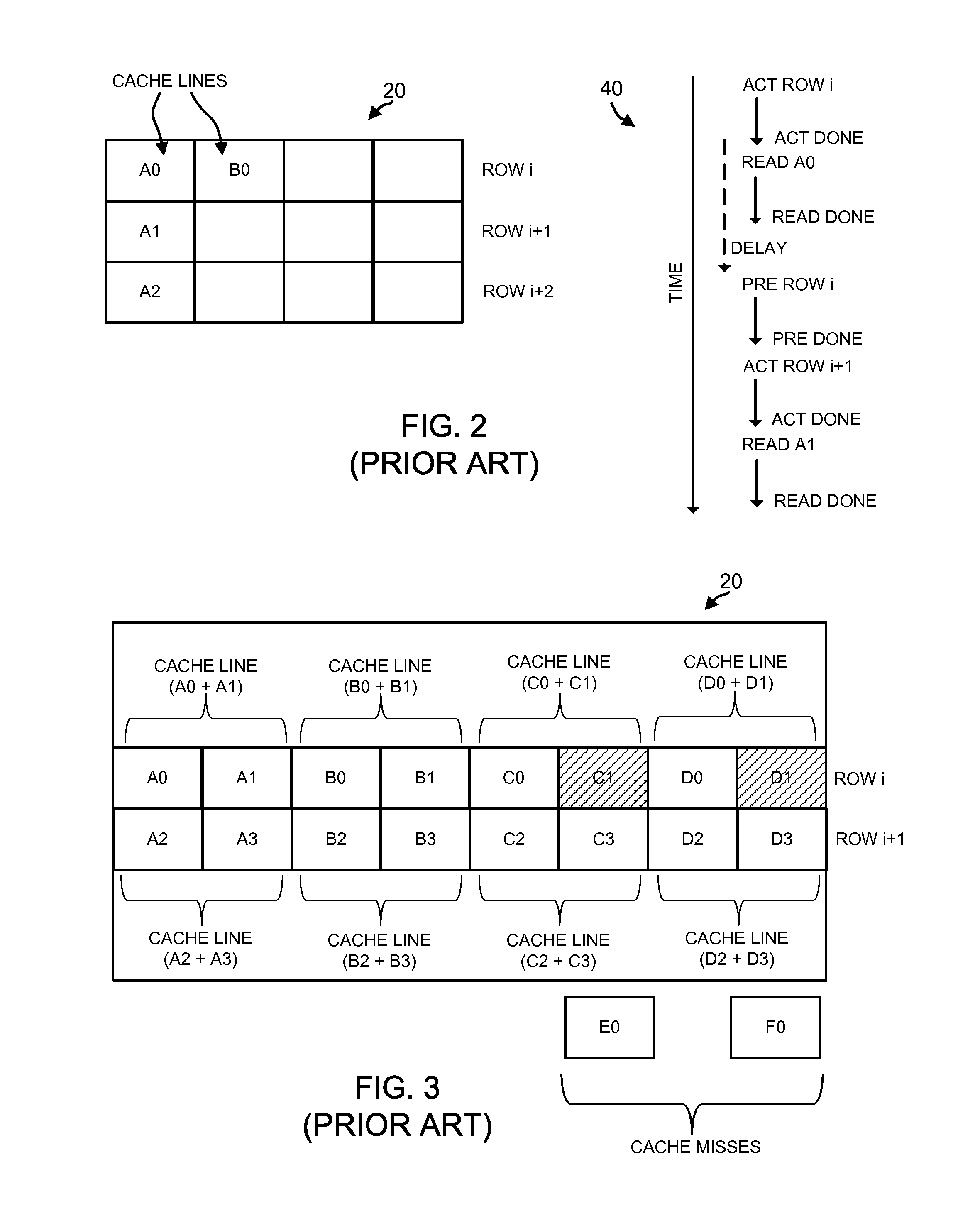System and Method for Cache Organization in Row-Based Memories
a cache and row-based memory technology, applied in the field of cache organization, can solve the problems of increasing observed memory access latencies, reducing memory bank availability, and consuming energy in the bit cell array, so as to reduce the number of activations, improve cache performance, and reduce power consumption
- Summary
- Abstract
- Description
- Claims
- Application Information
AI Technical Summary
Benefits of technology
Problems solved by technology
Method used
Image
Examples
Embodiment Construction
[0023]In an exemplary embodiment of the present disclosure, a method for mapping cache lines to a row based cache is provided. The method includes, in response to a plurality of memory access requests each including an address associated with a cache line of a main memory, mapping a plurality of sequentially addressed cache lines of the main memory to a row of the row-based cache.
[0024]Among other advantages, some embodiments of the method and system of the present disclosure provide a cache organization strategy that reduces the power consumption and improves performance of the cache by reducing the number of activations and precharges required to access the data stored in the cache. By organizing data in the cache such that a number of sequentially addressed cache lines are stored in the same cache row, data from spatially local cache lines is retrieved from the cache more efficiently, for example. Another exemplary advantage is that set associativity is improved while avoiding fr...
PUM
 Login to View More
Login to View More Abstract
Description
Claims
Application Information
 Login to View More
Login to View More - R&D
- Intellectual Property
- Life Sciences
- Materials
- Tech Scout
- Unparalleled Data Quality
- Higher Quality Content
- 60% Fewer Hallucinations
Browse by: Latest US Patents, China's latest patents, Technical Efficacy Thesaurus, Application Domain, Technology Topic, Popular Technical Reports.
© 2025 PatSnap. All rights reserved.Legal|Privacy policy|Modern Slavery Act Transparency Statement|Sitemap|About US| Contact US: help@patsnap.com



